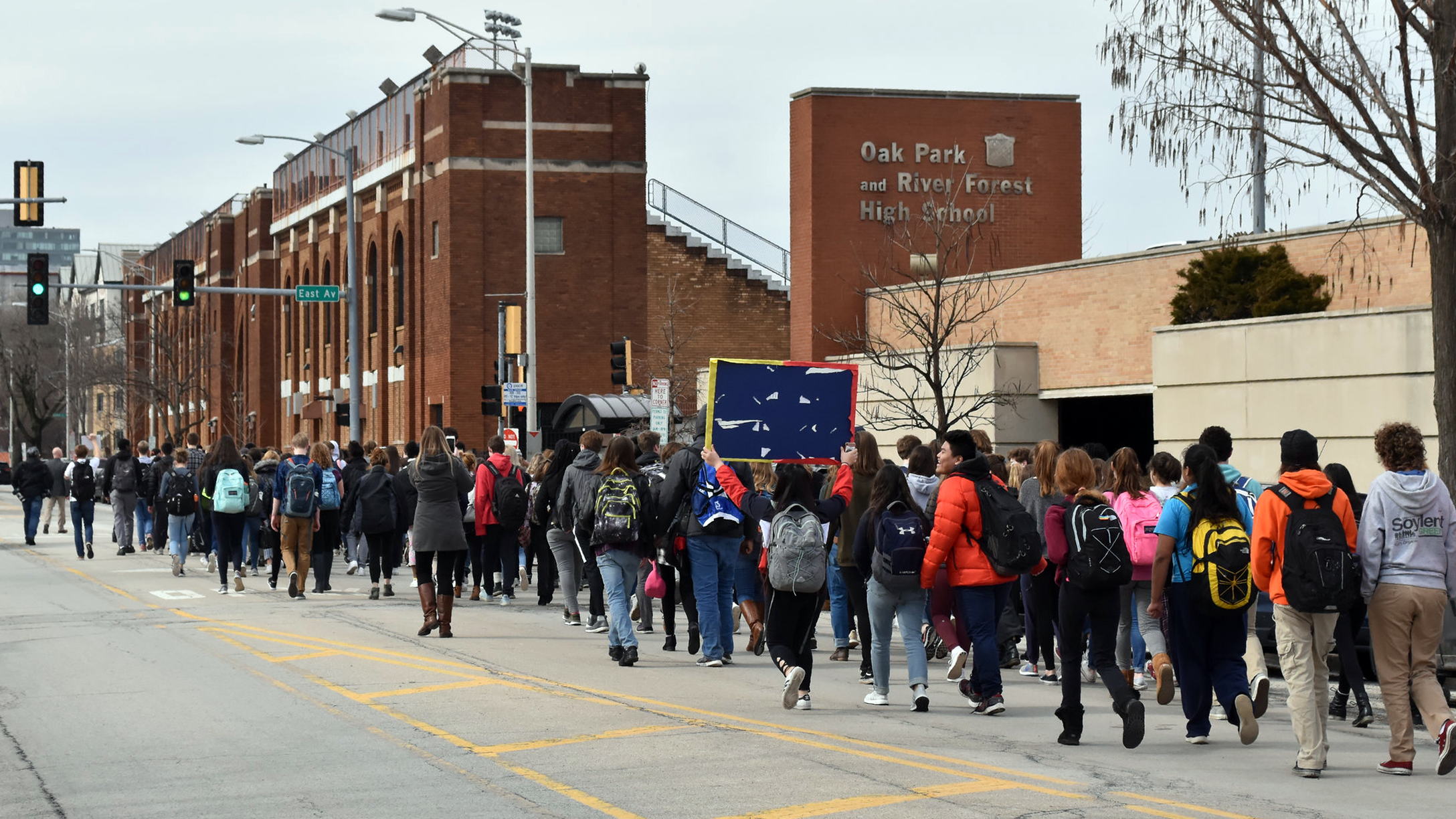During a school assembly last November, a freshman at Oak Park-River Forest High School used AirDrop to send Nazi imagery to large numbers of his schoolmates. That same week, other examples of racist graffiti were found scrawled on school property.
Just a few days before these incidents, a documentary series called America to Me had called attention to OPRF’s racial inequalities and self-segregation, as seen through the eyes of currently enrolled black students. My hometown of Oak Park, an affluent community on the doorstep of Chicago’s West Side, was shaken by the documentary, I learned when I made my rounds at a holiday party later that month, the prevailing sentiment being, “How could this happen in our village?”
OPRF is a public high school, a beloved institution and my own alma mater. My neighbors couldn’t fathom systemic racism and hate speech appearing in our allegedly inclusive, enlightened community.
Oak Park is surrounded on three sides by impoverished communities of color with inadequately-funded schools. The stark difference between my upbringing and the experiences of those who weren’t fortunate enough to live one block west of Austin, a neighborhood characterized by deep segregation, a high police presence, and low-income households, was always obvious to me and my classmates. How could we buy into the promise of American liberalism, the de facto ideology of Oak Park, when it was and is so obviously exclusionary?
The Oak Park Regional Housing Center took up the task of preventing white flight and redlining within the village in 1972. At the time, Oak Park’s population was 99% white. As open discrimination and re-segregation festered on Chicago’s West-Side, the center’s founder, Roberta Raymond, worked tirelessly to integrate her own community. She developed a formula that quite literally integrated new residents into the village by encouraging them to rent, and then buy homes in the village.
Potential residents were directed to The Housing Center, where Raymond coordinated with landlords and real estate agents. Slowly but surely, Oak Park’s ethnic makeup shifted. This contributed to Oak Park’s a rental turnover rate far lower than the national average.
Raymond’s plan combined public actors and private ownership, and it worked. Oak Park not only has a vastly more diverse population than its surrounding neighborhoods, but it’s also maintained these demographics over several decades. According to a 2017 paper delivered at Harvard by Housing Center director J. Robert Breymaier, Oak Park’s diverse racial makeup remains stable even as adjacent neighborhoods have become more segregated.
However, if you spend even a small amount of time in Oak Park, you’ll see that the outward diversity hasn’t created a “post-racial” idealism. That’s a fantasy that became stronger during the ascendance of Barack Obama, and continues to this day. Race problems in Oak Park mirror the problems elsewhere in the United States; the privileged, educated class that has been responsible for “progress” in matters of equality has too often thought of itself as having “solved” the problems of impoverished communities simply by electing a black president, or by creating an integrated high school; they’ve “done something,” often important and valuable things, but things that sometimes let people off the hook for understanding more, or doing more.
Recently a Black woman wrote an op-ed in the local paper about how people of color are racially profiled in Oak Park—just for “living their lives.” I’ve seen the scenes she describes play out; I once saw the police called to investigate black children walking down an alley.
Most people, regardless of race, move to Oak Park in order to bring their families into one of the better school districts in Illinois. But very little is done to help poor Black families move and stay within the confines of the village. One-fifth of Oak Park residents are Black, but despite making up one-fifth of the population,one-third of residents living under the poverty line are Black.
And integrated housing doesn’t mean affordable housing. Currently only .02% of 21,612 housing units in Oak Park are designated as public housing. While low-income Oak Parkers can receive vouchers, there’s still a dearth of affordable housing in the village. Property taxes are higher here than in other parts of Chicagoland, but affordable housing is extremely scarce.
The fifteen-year-old boy responsible for the fascist graffiti was identified and charged with “dissemination of an obscene message.” He was later removed from OPRF and called to appear before a juvenile court. For legal reasons, his identity was kept under wraps.
The community responded to the swastika incidents as best they could. There was an assembly for students, a walk-out, and a “Community Conversation.” Students led the march and spoke about feeling unsafe at the high school. “Let’s stop bragging about how diverse we are, because there’s a difference between having a neighbor of color and actually having and building a relationship with her neighbor of color,” one student told the local paper during the march.
OPRF’s superintendent Joylynn Pruitt-Adams addressed the situation in an email to families and students. “When systems feel threatened, they tend to react in unhealthy ways to hold those systems in place,” she wrote.
The swastika incident presented an opportunity for our community to reckon with some of its most deeply embedded inequalities. But if my town is as progressive as it claims to be, then it will not be enough to politely dispose of the most explicit forms of inequality and hate. Oak Park has to renegotiate its treatment of the haves and have-nots, pick up where Roberta Raymond left off, and build a space that is truly inclusive.
It seems the symptoms are being treated like the disease. Was the boy who vandalized and terrorized my former school a part of “the systems” that Pruitt-Adams spoke of? Where are the “Community Conversations” about policing, housing and economic inequality? Marginalized people in my community know that racism can’t be banished by good liberal intentions, nor by modernist architecture or farmers’ markets, nor even by model schools.






